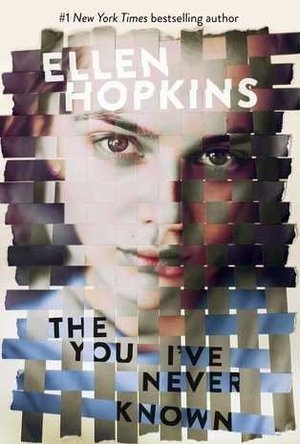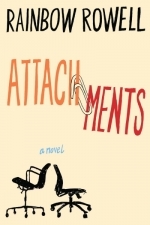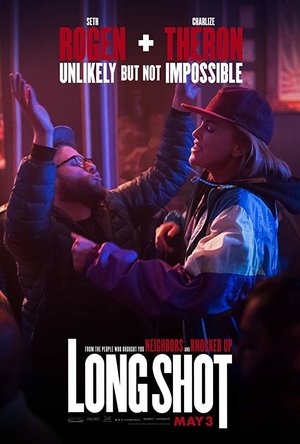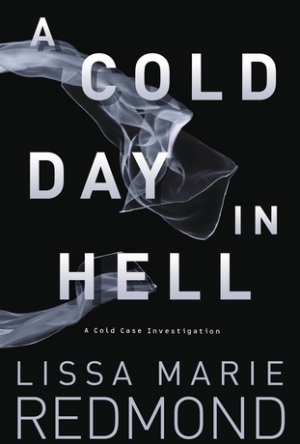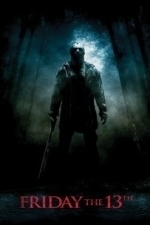
Xequence | MIDI Workstation
Music and Productivity
App
Xequence is an advanced linear MIDI Sequencer and Keyboard / Controller for iPhone and iPad. NOTE:...

Route4Me Route Planner
Navigation and Productivity
App
Do you like being late to appointments, work, or any other place you have to visit? Do you like...
Kristy H (1252 KP) rated The You I've Never Known in Books
Feb 13, 2018
Meanwhile, Maya is trying to escape her hateful mother, and the only out she can see is Jason Ritter, an older man in the military. But now Maya is pregnant, and married life with Jason is turning out to be scary and lonely.
Told in both prose and verse, there's no doubt that Hopkins' story is often beautifully done. My biggest issue with the novel wasn't the book itself, but that the plot description reveals, in my opinion, a major spoiler that doesn't actually occur until past page 350. If you ask me, that's far too deep within the tale to reveal in the description, and I would have enjoyed figuring that twist out myself and getting there on my own. The story itself, as I mentioned, is told in various ways, and you need to be prepared for the verse, as it does take some getting used to. I haven't read many of Hopkins' books (in fact, Goodreads tells me I've just read [b:Tilt|11133791|Tilt|Ellen Hopkins|https://images.gr-assets.com/books/1346263814s/11133791.jpg|16057047], which I'll confess I don't recall at all), and I probably had to go at least 75 pages until I was sort of in the swing of the verse "thing." The book is told from both Ariel and Maya's point of view (though mostly Ariel) and most of Ariel's pieces are in verse.
So, combine the verse/prose aspect and the fact that I was constantly waiting for this plot twist to happen while reading, and it took a bit to get into the book. There's definitely a lot going on this novel, but it was nice that at least Ariel's sexuality wasn't always the main focus. It was also refreshing to find a bisexual teen heroine. Overall, the book seemed to handle it fairly well, too, without so much of the usual stereotyping you can find in other novels and/or the media. I think a teen struggling with similar issues could find some comfort in this book, and that's important. For me, I wasn't completely sure that all the threads of the book were truly fully formed. I'm not completely sure how to explain that fully; it's not that I expected resolution to everything, but there were some serious topics dealt with in in the novel (beyond Ariel's sexuality) and it sometimes felt like they all got glossed over or moved past rather quickly. Bisexuality, rape, abuse... those are serious topics, and I'm not sure they got the ultimate focus they always needed.
So, in the end, I find myself a bit stumped by THE YOU I'VE NEVER KNOWN. I was certainly intrigued by the book and enjoyed it. As a bisexual female, I greatly enjoyed the character of Ariel and welcomed finding her in literature. While parts of the book went on a bit for me (though perhaps that was the verse format, I'm not sure, or waiting for the aforementioned spoiler), I found it interesting. Still, in the end, something felt a tad off for me. However, much of the writing was lovely, and the storyline different and often engaging. Overall, I'd probably give this one 3.5 stars.
I received a copy of this novel from the publisher and Edelweiss (thank you) in return for an unbiased review; it is available everywhere as of 01/24/2017.
Darren (1599 KP) rated The Amazing Spider-Man 2 (2014) in Movies
Jun 20, 2019
Actor Review
Andrew Garfield: Spider-Man/Peter Parker while trying to figure out what to do with his life he carries on fighting crime, he has to decide whether to keep with his girlfriend when her father’s dying wish was to leave her so she couldn’t get caught up in trouble. He does ends up having to face the biggest battle of his life after his battles with Electro and Green Goblin. Good performance in a character that develops as the film unfolds. (8/10)
spide
Emma Stone: Gwen Stacy ambitious girlfriend of Peter, who wants to excel in her studies and gets that chance to but with Peter in her life she will always be in danger. Good supporting performance, but I always find relationships for superheroes only get in the way and annoy. (7/10)
emma
Jamie Foxx: Electro lonely scientist who has helped the city design a better power source. He feels like everyone is against him but when Spider-Man saves him he gets a boost of confidence. Just when things look good for Max he ends up having an accident at work and turning into Electro, who starts off just wanting help but when he feels betrayed by Spider-Man he wants to take out the web-slinger and the city. Good performance playing a very difficult character that really looks the part. (8/10)
eletrco
Dane DeHaan: Green Goblin/Harry Osborn an old friend of Peter who wants him to find Spider-Man so he can use his blood to cure his terminal illness. After both Peter and Spider-Man refuse for safety reason he finds out his company secretly has some stored away and he uses it and becomes the Green Goblin out to stop Spider-Man. Good performance from the always solid Dane. (8/10)
harry
Director Review: Marc Webb – Great direction creating a story that really is building to something bigger, creating some very memorable fight scenes and a villain in Electro like nothing we have seen before. (8/10)
Action: When the action happens it is all very good, with some great camera spinning shots of Spider-Man in battle. (8/10)
Superhero: A solid entry in the superhero genre. (8/10)
Settings: New York makes a great setting because without all the building Spider-Man couldn’t swing as much. (9/10)
Special Effects: Great special effects used throughout the film. (10/10)
Suggestion: This must be watch by all the superhero fans out there, it is creating a big picture without having to use separate films to add to one of franchise. (Superhero Fans Watch)
Best Part: Spider-Man battles Electro round two.
Worst Part: It does start slow, nearly an hour before we meet Electro.
Action Scene Of The Film: The final battles
Believability: No (0/10)
Chances of Tears: No (0/10)
Chances of Sequel: Has one planned
Post Credits Scene: No
Oscar Chances: No
Box Office: $708 Million
Budget: $200 Million
Runtime: 2 Hours 22 Minutes
Tagline: His greatest battle begins
Overall: Solid Addition to Spider-Man Franchise
https://moviesreview101.com/2014/09/01/the-amazing-spider-man-2-2014/

Electric Guitar Lessons - Ultimate Guide
Music and Education
App
This app has over 300 easy to follow video lessons on how to play the Electric Guitar including...
Kaysee Hood (83 KP) rated Attachments in Books
Nov 16, 2017
1. This is Rainbow Rowell's first published novel, so of course for some it doesn't hold the magic like Eleanor & Park. Keep in mind many first books never hold against later published works, but are still good or why would the author be allowed to continue?
2. Even though it was published in 2011, it is based in 1999/2000 for plot reasons as to why Lincoln would have his job. This may offset some readers who might not realize how different 1999 is to 2017 Internet use wise for jobs.
3. The lack of reading into who and why the characters are as they are. In a way, it is the adult version of Fangirl, expect the roles are flipped a tad bit.
Anyway, I loved Attachments because it stayed true to Rowell's style, yet it felt raw compared to how she writes now. There is the unconventional love story of a man falling in love with a woman through the e-mails he reads as part of his job to ensure people are working and not nonsense while on the job. There's characters of all sorts with real world problems and real life flaws. There are topics covered of overbearing mothers and mothers who are too cruel both because of their own life. There is men who never want to be tied down, yet one does due to advice and the right woman. The book covers pieces life without taking from the plot whatsoever.
Lincoln O'Neil is a 28-year-old who could have been a successful man with a normal day shift job if a break up had not left him shattered nine years before. Maybe also if his mother had not coddled him, even though she clearly meant well as it is clear him and his sister, Eve, might have been her whole life. Yet we would not have the awkward, shy man working a the swing shift in the IT office as a "security officer" fixing computers in his spare time when he isn't reading through e-mails that come up flagged in the Webfence program. Apparently the security part was ensuring no one at the newspaper office was using the Internet to look at porn, gamble, or idle chit chat instead of working. Not quite was Lincoln had pictured and he doesn't enjoy reading people's exchanges, but the money is good and will grant him the chance to move out his mom's sooner rather than later.
His mundane routine and nothingness during his shift is filled with some enjoyment as Lincoln reads the e-mails flagged from Beth Fremont and Jennifer Scribner-Snyder. There is nothing harmful. Innocent discussions of water cooler talk, life, relationships, and gossip. As much as he knows it is wrong to continue to read their messages about their lives without flagging them as he would anyone else Lincoln cannot help but to get a kick out of the e-mails.
However it soon becomes apparent Lincoln has fallen for Beth despite the fact he has no idea what she looks like or who is she outside of work. Not to mention she has a boyfriend, Chris, who even though she may rant about to Jennifer, she obviously has not intent on breaking ties with. Not for someone like Lincoln anyway. So he spends his time in turmoil trying to decide if a new job is in order, going back to college, or finding a woman to focus his attention on (which are the very things he tries to do). He even tries to ignore the e-mails, yet can't. He cannot help, but feel for Jennifer's worry over having a baby even though her husband wants one. He cannot help, but captivated by their friendship. He cannot help his feelings for Beth for who she is.
It doesn't help Beth has spotted him labeling him as "A Cute Guy" when he never realized she was around. It is like a game of cat and mouse between them then. Beth still unaware he is reading her e-mails. Lincoln unaware of how often she is close to him even when she is going out of her way to find him.
Thus a budding romance is born. But how much of a romance can it be when Beth has Chris and Lincoln can barely look a woman in the eyes?
BankofMarquis (1832 KP) rated Long Shot (2019) in Movies
May 4, 2019 (Updated May 4, 2019)
And these people would be wrong, for LONG SHOT is a very entertaining, heartfelt romantic comedy that has one big surprise - the strong chemistry between the two leads.
Kind of the "anti-AMERICAN PRESIDENT" (the 1995 Michael Douglas/Annette Benning RomCom written by Aaron Sorkin), LONG SHOT tells the tale of Secretary of State, Charlotte Field (Theron) who embarks on a Presidential bid. When she polls low in "sense of humor" she decides to add a comedy writer to her staff to punch up her speeches. A chance encounter with her childhood next door neighbor leads Field to hire Fred Flarsky (Seth Rogan). Will sparks fly? Can Fred remind Charlotte of why she chose politics in the first place?
What do you think? It's a RomCom afterall, but it's the journey and not the destination that is important.
And...his is a fun journey...mostly because of the performances of Theron and Rogan. Over the years, I have grown to really appreciate Theron - from dramas like NORTH COUNTRY and her Oscar-winning turn in MONSTER, to action flicks like MAD MAX:FURY ROAD and FATE OF THE FURIOUS, to comedies like A MILLION WAYS TO DIE IN THE WEST and this film - there is nothing (apparently) that she can't do. She is really good in all of these - even if the material is not the greatest.
The surprise to me here was the performance of Rogan - it was "wacky", "stoner-ish" and "out there", but toned down and tempered - probably the sign of a good, strong Director at the helm. I bought Flarsky's journey in this story and the relationship between these two characters was believable because Rogan was able to match Theron's energy and show real chemistry between the two.
Other fine turns are given by O'Shea Jackson, Jr (STRAIGHT OUTTA COMPTON), as Rogan's buddy, Ravi Patel (TV's MASTER OF NONE) as one of Theron's support staff and (especially) June Diane Rapheal (TV's GRACE AND FRANKIE) who really shines in the unenviable role of the Theron's Chief of Staff who doesn't approve of putting Rogan's character on the team, but she plays the role with layers - not one-note - and so we get a real person, with conflicted feelings at time, and she rises above the typical type of character in this type of role.
The only disappointment for me was Bob Odenkirk's President (who is stepping down for - he hopes - a much bigger job, MOVIE STAR) and not because of Odenkirk's performance, he was fine with what he was given, but there wasn't much nuance written in this part and (compared to the layers shown/written by others) the one-note-ness of Odenkirk's character was noticeable. As was Andy Serkis as a heavily-made up, older media mogul who is trying to use his wealth to manipulate the events from behind the scene - this character (and make-up) was a "swing and a miss" for me. But, fortunately, neither Serkis nor Odenkirk have much screen time, so it was more of a "distraction" than an "annoyance" for me.
I mention the Director - so I better give credit to Jonathan Levine (the awful SNATCHED with Amy Shumer and Goldie Hawn) - I have not really enjoyed anything else he has Directed, but I have to give him credit for this one - he brings "the funny and the crude" without going overboard, driving the story efficiently while putting in enough yuks and (surprisingly) heart in this movie along the way.
Now...don't be fooled here...there is quite a bit of "crude, lewd and rude" behavior and jokes (a crucial plot point hangs on a "sex act"), so don't expect a gentile, Cary Grant/Katherine Hepburn battle of the sexes. Expect a funny (crude), sexy (lewd) and opinionated (rude) take on the modern political system and how a person can lose their soul if they choose to play the game.
With a large amount of heart - and strong performances/chemistry between the two leads - I was pleasantly surprised by LONG SHOT - and, if you can handle the crude, lude and rude, then you will have a good time at this film.
Letter Grade: A-
8 stars (out of 10) and you can take that to the Bank(OfMarquis)
Kristy H (1252 KP) rated A Cold Day in Hell in Books
Jan 29, 2018
I read a lot of mysteries and while there are thankfully more strong female detectives coming on the scene (see Kristen Lepionka's Roxanne Weary and Emily Littlejohn's Gemma Monroe, for instance), they are still few and far between. While Lauren Riley may still be finding herself (there's a lot of side coverage of emotional entanglements and relationships here), I still love finding and championing a complicated, real, strong female detective.
Lauren's PI case is really the star of the show, and it's interesting and engaging throughout the entire novel. It keeps you guessing throughout, questioning whether David did it or not, and who else played a key role in Katherine and Anthony Vine lives. Nothing is cut or dried.
Also fascinating is Lauren's main cold case. While you could argue some of it ties up neatly, it doesn't go as expected, per se, if that makes sense, and the characters involved are intriguing and different. All the cases kept me interested as I read. A lot certainly happens in this novel, between Lauren's work and personal life. Nothing is boring, and there's never really a dull moment, especially once you get into the swing of things and realize that the book covers both her personal life and her work life in-depth. It also tells the story from more than Lauren's POV, even if she's the main focus, which works surprisingly well.
I don't think it's a spoiler to say that the book culminates in a trial related to Lauren's PI case, and it's a great, suspenseful, incredibly well-written piece of work. The courtroom scenes were so well-done and really had me on the edge of my seat. One of the things I loved about this novel was how I could so easily picture each of these characters-- each is well-described and fleshed out. Redmond writes darn good trial scenes (and a darn good book), and I was frantically flipping the pages to see how things would turn out.
It wasn't until I finished the book that I learned the author is a retired homicide detective, but it definitely shows as you read. The novel is written expertly in terms of police and courtroom procedure, but still enjoyable in terms of the characters. There is a lot of personal "stuff" in terms of Lauren; this will be a little different if you are used to the Bosch type of detective (the love of my life and my hero). Still, it's completely refreshing to see a complicated female lead detective, and, as mentioned, so nice to be reading more of these stories. I grew to really love Lauren.
The courtroom scenes are great, and a lot will keep you guessing. Sure, some of the cold cases wrap up what seem a little easily, but even Lauren addresses that as she works. I read some reviews that Joe Wheeler is a cliche character, and I guess I could see where people get that, but for me, society as of late seems to be showing us everyday that these sort of angry, abusive men truly exist. Everywhere. To me, Joe was a sadly realistic portrayal of a horrible man, and his slow, boiling anger only added to the tension of the entire novel.
Overall, I really enjoyed this one. It looks like it's going to be a series, and it ends with some unfinished issues that make me even more eager for book two.
I received a copy of this novel from the publisher and Netgalley in return for an unbiased review.
Gareth von Kallenbach (980 KP) rated Friday the 13th (2009) in Movies
Aug 14, 2019
Along with the aforementioned Michael Myers, and the later Freddy Krueger from the “Nightmare on Elm Street” series, Jason Voorhees of the “Friday The 13Th” series has become a cultural landmark. He has appeared in over ten movies (eleven if you count “Freddy Vs. Jason”) and unleashed havoc on countless oversexed and loaded teens, as well as those unfortunate enough to cross his path.
While the series, to many fans, become stale and largely self mocking with the Jason-in-space themed “Jason X”, the character rebounded nicely with “Freddy Vs. Jason” and had many fans clamoring for a second match up between the two iconic bad guys.
Eventually the powers-that-be decided to go the remake route, which had proven successful with “Halloween” and “My Bloody Valentine”, and have crafted a new “Friday the 13th” which they hope will re-energize the series.
The film opens with a modern re-telling of what was part of the finale of the original film, and hits the ground running with an impressive opening sequence that has Jason menacing a group of teens camping in the woods. The intense first twenty minutes of the film had the audience at the test screening gasping and cheering as the events set the stage for the body of the film, which revolves around another group of young adults taking a trip into the woods for a scenic getaway.
As the group stops for supplies, they encounter a young man who is looking for his sister who vanished in the area six weeks earlier. Despite little luck in his search, and the insistence by the local police that his sister is not anywhere in the area, he remains undaunted and continues his search.
At the same time, the group of young adults embarks on a frenzy of sex, drinking, drugs, and carefree living in the woods unaware that they are about to gain the attention of Camp Crystal Lake’s most infamous former camper.
As the film unfolds, Jason soon unleashes his customary brutality on the group as well as any townies that come across him, and the film deftly mixes some humor with classic horror mayhem. In the time honored formula, a group of survivors soon finds themselves under siege by Jason and must find a way to survive Jason’s wrath.
While the film lacks much in the way of plot and is loaded with a cast of largely unknowns, the film is a refreshing update to the series, knowing what the fans have come to expect and providing plenty of gore and scares. Since the cast exists to be little more than fodder for Jason, there is little effort devoted to fleshing them out as characters other than to provide excuses for most of the ladies in the film to shed their clothes, and a few of the male cast to establish themselves as comic relief, or the jerk who is destined for something special.
Director Marcus Nispel who has a solid pedigree with the recent “The Texas Chainsaw Massacre”, viral videos of Resident Evil 5, as well as the pending “Alice.” He clearly knows his subject matter and working with Producer Michael Bay and a script from Damian Shannon and Mark Swift (the duo behind “Freddy vs. Jason”), produced a solid by the numbers horror film.
Fans of the series will note clever references to the past films such as Jason’s original mask and will find themselves yelling at the screen over the constant stupidity of the victims as well as the inventive way Jason dispatches his victims. I found myself enjoying the updated Jason because while the movie is faithful to the character, it revitalized him to show a more cunning predator who is not above using traps, bait, and plotting to achieve his means. There was a plot thread in the film that did not really get developed as much as I had hoped, but in the end, the film delivered the goods and sets the stage well for future outings of the machete-wielding Jason.

Learn To Play Guitar Solos
Music and Education
App
Learn how to play guitar solos with this selection of 176 easy to follow tutorial lessons. ...
